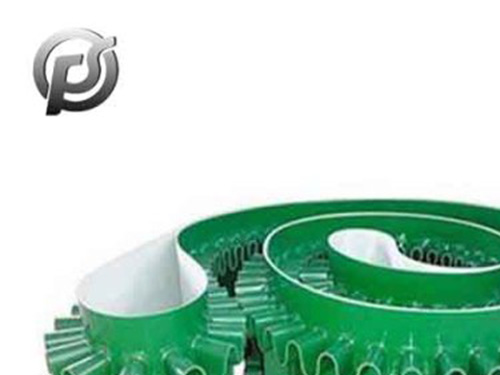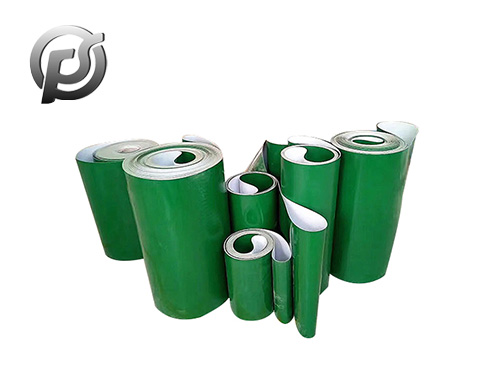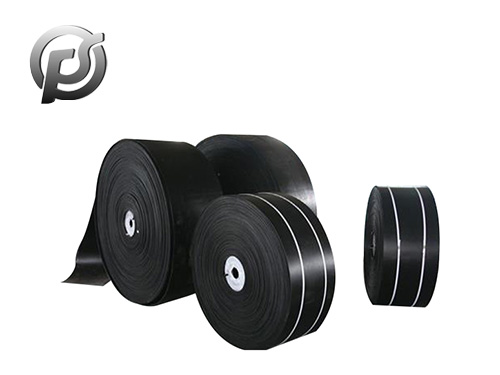The
belt conveyor has the advantages of simple structure and large conveying capacity, and is widely used in mining, metallurgy and other fields. Improve the reliability and stability of belt conveyor mainly from the equipment installation and operation maintenance.
1. Structure of belt conveyor Common belt conveyor structure is mainly composed of driving device, roller, tensioning device, brake device, conveyor belt and roller and other parts. The driving device includes a driving drum, a reducer, a motor and a brake. Reducer from the structure of the form of the main points of direct axis and parallel axis reducer.
2. The belt conveyor installation sequence measurement and setting out → foundation acceptance → nose equipment transportation → tensioning device transportation → middle frame transportation → tail transportation → nose equipment installation and alignment → tensioning device installation and alignment → middle frame installation → tail installation → belt vulcan display → single machine trial operation → trial operation.
3. Installation technical requirements of belt conveyor
1) Installation of conveyor belt
Conveyor belt is the main component of belt conveyor, through the whole length of the belt conveyor. Reducing the failure rate of conveyor belt is an important method to improve the life of belt conveyor and reduce the running cost.
In the process of conveyor belt installation, to ensure the quality of conveyor belt joint must be flat, non-adhesive, non-bubbling, cohesive, smooth; The noncoincidence degree of the center line of the two rolls conveyor belt is less than 3mm. During the operation of the belt machine, the conveyor belt shall not slip or run off, and the amount of run off shall not exceed 5% of the bandwidth.
2) Installation of driving device
The driving device provides traction when the belt conveyor runs normally, and is the core of the belt conveyor.
When the driving device is installed, it is necessary to ensure that the center line of the belt conveyor is perpendicular to the axis of the driving drum, and in the center line of the width of the driving drum; Ensure that the levelness of the driving drum and the steering drum shaft should not exceed 0.3‰, the non-coincidence degree between the width center line of the driving drum and the width center line of the reversing drum and the longitudinal center line of the belt conveyor is not more than 2mm, and the non-perpendicularity between the axis line of the driving drum and the reversing drum and the longitudinal center line of the belt conveyor is not more than 2‰ of the drum width.
When the driving device is installed and adjusted, ensure that the motor has no abnormal sound, no abnormal heating and vibration; There is no abnormal sound and vibration phenomenon during the test run of the reducer, the box surface temperature is not beyond the standard, the tooth surface is not excessive wear, the fastening bolt is not loose; The brake and the backstop have no abnormal sound and heating phenomenon, and the rotating pin shaft is not stuck or abnormal wear.
3) Installation of idlers and racks
The roller is installed on the frame to support the conveyor belt, so that the overhang of the conveyor belt does not exceed the specified requirements. The roller is required to rotate flexibly and perpendicular to the center line of the belt conveyor, and the roller has no abnormal sound and stuck phenomenon. The center line of the frame and the longitudinal center line of the belt conveyor do not overlap more than 3mm; The relative height difference between the two channels of steel on the rack is not more than 3mm.
4) Installation of tension device
The tension device can compensate the elastic and plastic deformation of the conveyor belt, so that the conveyor has enough tension to prevent the belt conveyor from slipping. The rope of the tensioning device shall not rust and break the wire, and the conveyor belt shall not be relaxed. As far as possible, it is installed on the no-load branch near the driving drum, which is conducive to starting and braking without skid phenomenon; Try to install in the conveyor belt tension minimum place, so as to reduce the tension.
5) Installation of protection devices
The anti-skid protection device is installed on the return belt of the belt conveyor. For the fixed belt conveyor, the anti-skid protection device is installed between the head unloading roller and the driving roller; The pile protection shall be installed at the lap joint of two belt conveyors. The protective contact shall be hung in front of the unloading roller, and the hanging height of the protective contact shall not be higher than the lower edge of the unloading roller; The running off protection is installed in pairs, and the head and tail of the machine are installed in one group, and fixed on the belt conveyor frame using a special bracket; The temperature sensor shall be installed near the driving drum of the belt conveyor, and the temperature probe shall be close to the outer wall of the main drum.
6) Multiple belt conveyor lap installation
When multiple belt conveyors are bonded, the material falls from the unloading place of the previous belt conveyor to the receiving place of the rear belt conveyor. When the belt conveyor is installed, the drop between the unloading drum of the former belt conveyor and the rear belt conveyor should be kept at about 1m. Ensure that the material can be smoothly unloaded to the receiving belt conveyor, without too much impact.
4. Maintenance of the belt conveyor The workplace of the belt conveyor shall be kept clean to ensure that the motor, hydraulic coupler and reducer have good heat dissipation conditions; In the running process of belt conveyor, try to avoid frequent start; Before working, we should carefully check whether the hydraulic coupler leaks oil, whether the steel wire rope loosens, and whether the conveyor belt runs off. Large materials are not allowed to be loaded directly, so as not to damage the conveyor belt. Regular maintenance of belt conveyor is conducive to improving the service life of belt conveyor and reducing the failure rate of belt conveyor. Ensure the belt conveyor idler seal ring filled with grease, idler rotation flexible; Reducer, hydraulic coupling and other devices do not leak oil; Regularly check whether the fastening parts are firm and reliable; Check conveyor belt joints regularly, and repair or replace them in time.
The early installation is the basis of the stable operation of the belt conveyor, should strictly implement the installation technical requirements, from the source of hidden dangers. Maintenance is the guarantee of stable operation of belt conveyor. Therefore, it is necessary to strictly grasp the overhaul system and overhaul workers' business skills to prevent the failure of belt conveyor.
 Stone Conveyor Belt: Enhancing Efficiency and Productivity in Material Handling
Stone Conveyor Belt: Enhancing Efficiency and Productivity in Material Handling
 Optimizing Operations with PE Conveyor Belts: Durability, Efficiency, and Versatility
Optimizing Operations with PE Conveyor Belts: Durability, Efficiency, and Versatility
 Exploring the Efficiency and Versatility of Light Conveyor Belts
Exploring the Efficiency and Versatility of Light Conveyor Belts